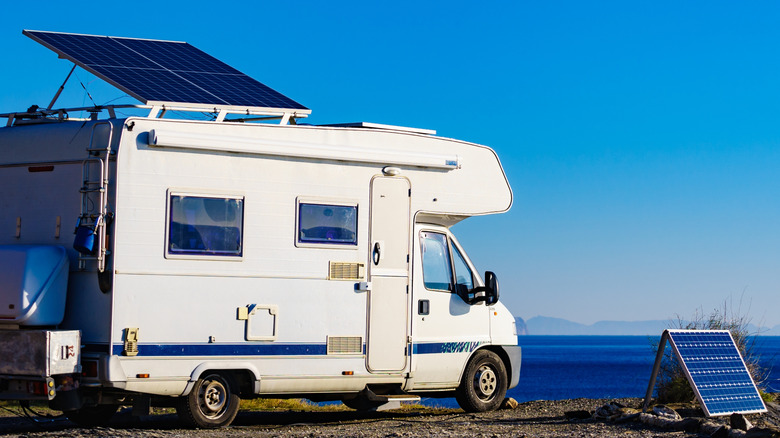
I love to go camping, but the way I camp has changed recently thanks to the addition of solar panels to my camping gear. I used to have no need for solar panels, as I would hike miles into the woods with forty pounds of gear (too much, I know) strapped to my back. Then one day my body said, "Hey, stupid! You're 50!"
The next morning, I was supposed to get up early, break down camp, and hike back to my car. Instead, I ended up taking all the aspirin in my bag and sitting in my camp chair until my aching
back was ready to join me for the day's activities. That's when I decided to trade in my backpack for an ancient RAM 1500 and an older camper shell that fits -- even if it doesn't even come close to matching the color of the truck.
I converted the box of that truck into a mini-RV that contains such amenities as a TV, a fan, lights, and sometimes an air conditioner. All of those devices, not to mention my laptop and smartphone, require electricity. Since I don't like being tied to expensive, crowded campsites with electrical hookups -- also known as shore power among RVers -- I decided to add solar panels to my modest camping rig.
Soon enough, however, I realized that the roughing it part was not what I loved about camping. I think that's also true of most RV enthusiasts, which is why there's a market for luxury RVs that pack in all the comforts of home. However, the one thing that makes all this possible is power, which is why solar panels have become such an important part of RV camping.
Read more: Save Your Engine: 5 Tips For Preventing And Cleaning Carbon Buildup
How Do You Know If You Need Solar Panels?
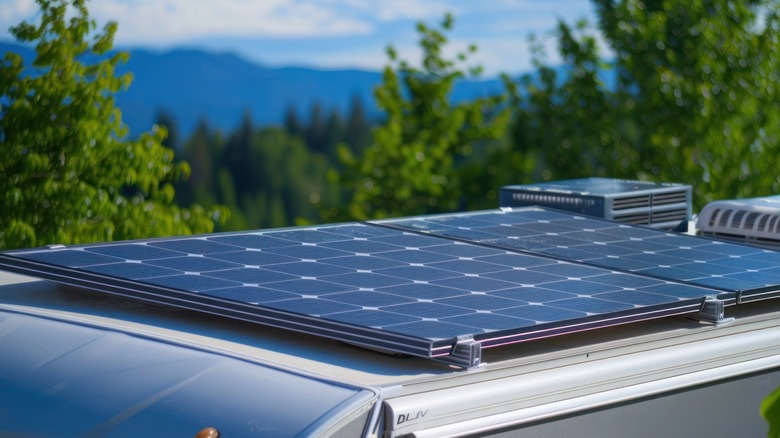
Lots of RVers do just fine without solar panels. Weekend warriors who occasionally get out for two days at a time don't have much in the way of power needs when they're camping. Maybe they just need power for recharging their phones and keeping some lights on. In that case, you could probably get by with a fully charged power bank or battery.
Other campers use their gas or propane generators. A generator can be a good source of power when you use it safely and are thoughtful to your neighbors, but anyone who's camped near someone running a generator all night knows these machines have their disadvantages. For one thing, they can be noisy, which is why campgrounds have rules about the hours they can be run. There are also safety concerns and the cost of fuel to consider. So, if you have significant power needs and running a generator isn't right for you, solar panels may be the way to go.
Shore power can certainly meet most electrical needs, but using solar power opens up a whole new world of camping. Camping without shore power or water hookups -- called boondocking by those in the know -- allows you to explore places like the millions of acres of open land in the Western U.S. managed by the Bureau of Land Management. Florida also makes certain areas open for boondockers in the central part of the state. For the most part these campgrounds are free to use, unlike the crowded campgrounds with hookups.
What Kind Of Solar Panels Should You Get?
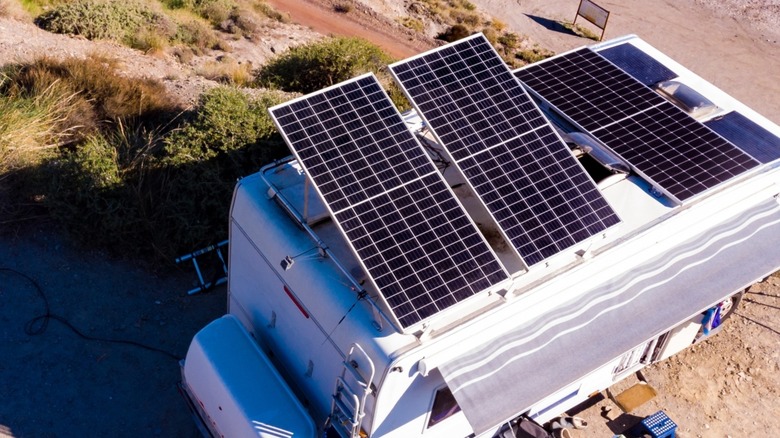
There are some decisions you'll need to make if you choose to get solar panels. Do you want rigid panels or the flexible type? Rigid panels are more efficient and typically last longer. However, they also take up more space, require you to drill holes in your roof to install a rack, and have a higher up-front price tag than flexible solar panels.
There are two types of rigid solar panels: monocrystalline and polycrystalline. Monocrystalline panels have a higher efficiency range, meaning they can convert more sunlight into power. These panels have an efficiency range of 17% to 22%, while polycrystalline panels have a range of 15% to 17%. This means that monocrystalline panels will take up less roof space, since they don't have to be as large as polycrystalline panels to produce the same amount of electricity. However, they are the more expensive option. So, if you have space on your roof but not on your budget, you might opt for the polycrystalline panels.
Flexible panels, on the other hand, are lighter and cheaper, but are typically less efficient and do not last as long as rigid panels. However, they offer the advantage of not requiring you to drill holes in your roof, as these panels can be mounted with magnets or adhesives.
How Many Solar Panels Do You Need?
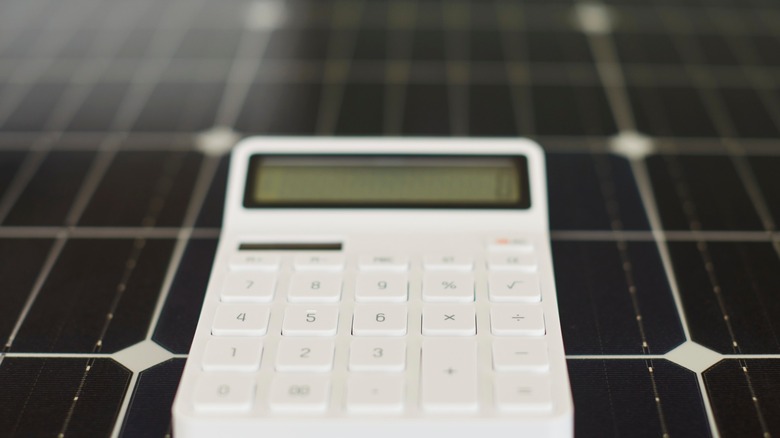
Next, you'll have to figure out how much solar power you need. Fortunately, there are online solar power calculators that can help you with this like this one from Renogy or this one from eTrailer. Just enter the wattage for each appliance you'll have plugged in or have the calculator estimate it based on standard power usage. Once you know how many watt-hours (Wh) you'll use, you'll have a better idea of how much wattage (W) you'll need from your solar panels.
Suppose the calculator says you will use 400Wh throughout the day. That means you'll need at least 400Wh from your solar panels throughout the day to keep your batteries topped off at 100%. You want to keep your battery topped off during the day so that it will get you through the night when your solar panels aren't getting any sunlight.
Does that mean if you use 400Wh you should get solar panels that are rated at a total of 400W, such as two 200W panels or one 400W panel? Not exactly -- if a solar panel is rated at 400W, that means it should produce 400Wh at the brightest hour of the day in direct sunlight. On average though, it will produce around 60% to 75% of its rating during peak hours, or around 300Wh. So, if you want to use 400Wh, you'll want panels with a total rating of well over 500W.
Don't Forget The Batteries (And These Other Important Components)
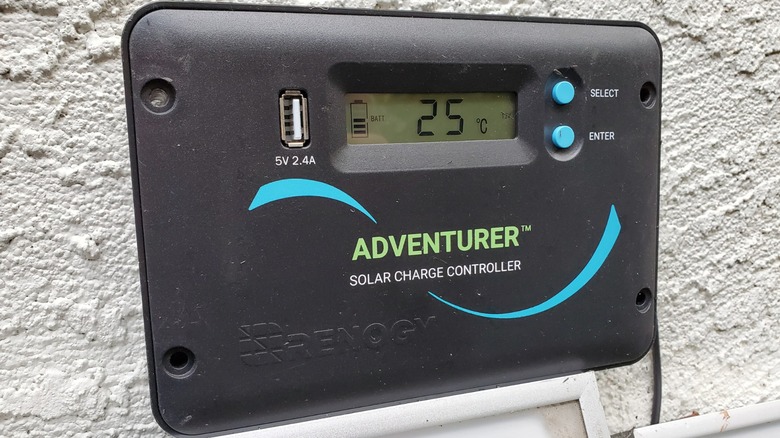
Solar panels are just one part of the puzzle. Batteries are just as important. Remember, solar panels will be of no help if you intend to use power after the sun goes down. You'll need batteries that store enough power to get you through the night, and maybe even the next day, if it's overcast. Many campers use lithium batteries since they're lighter, more efficient, and last longer than the alternatives, like AGM and lead acid batteries. Lithium batteries can discharge 80% to 90% of their capacity, while AGM batteries will need to be recharged after discharging just 50% of their capacity.
Besides cables, there are two other components that you'll need to include in your electrical setup -– a charge controller and an inverter. A charge controller regulates the voltage that runs from your solar panels to your batteries, ensuring that the batteries are not overcharged. An inverter converts the DC power from your battery to AC power, so that you can plug in your appliances. Fortunately, solar power conversion kits are sold that include panels, charge controllers, and inverters. Some of these kits even include batteries.
Are Solar Panels Worth It?
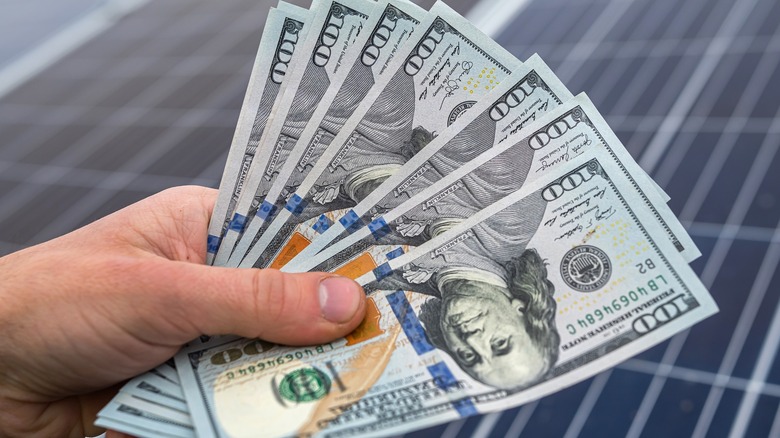
A basic 400W solar kit that includes solar panels, batteries, an inverter, and charge controller costs around $1,500. You'll need more power than that if you're using electricity to heat or cool your RV, which means you can expect to spend much more. For instance, a 1600W system can run you around $5,000. Considering the average campsite with electrical hookups runs around $30 per night, you'll need to do a lot of boondocking before the system pays for itself.
Let's be honest -- you didn't buy your continually depreciating RV as a financial investment, in spite of what you may have told your spouse. That's because money spent on camping isn't an investment for the future, it's an investment for the here and now. You're building memories, often with loved ones, in the outdoors. So, if you have the funds and solar panels help you enjoy camping that much more, they might just be worth the expense.
Want more like this? Join the Jalopnik newsletter to get the latest auto news sent straight to your inbox...
Read the original article on Jalopnik.










